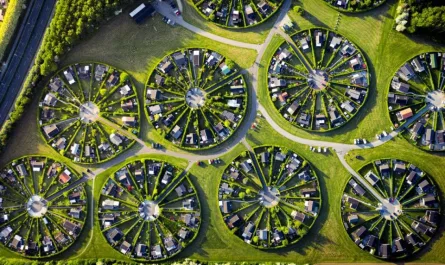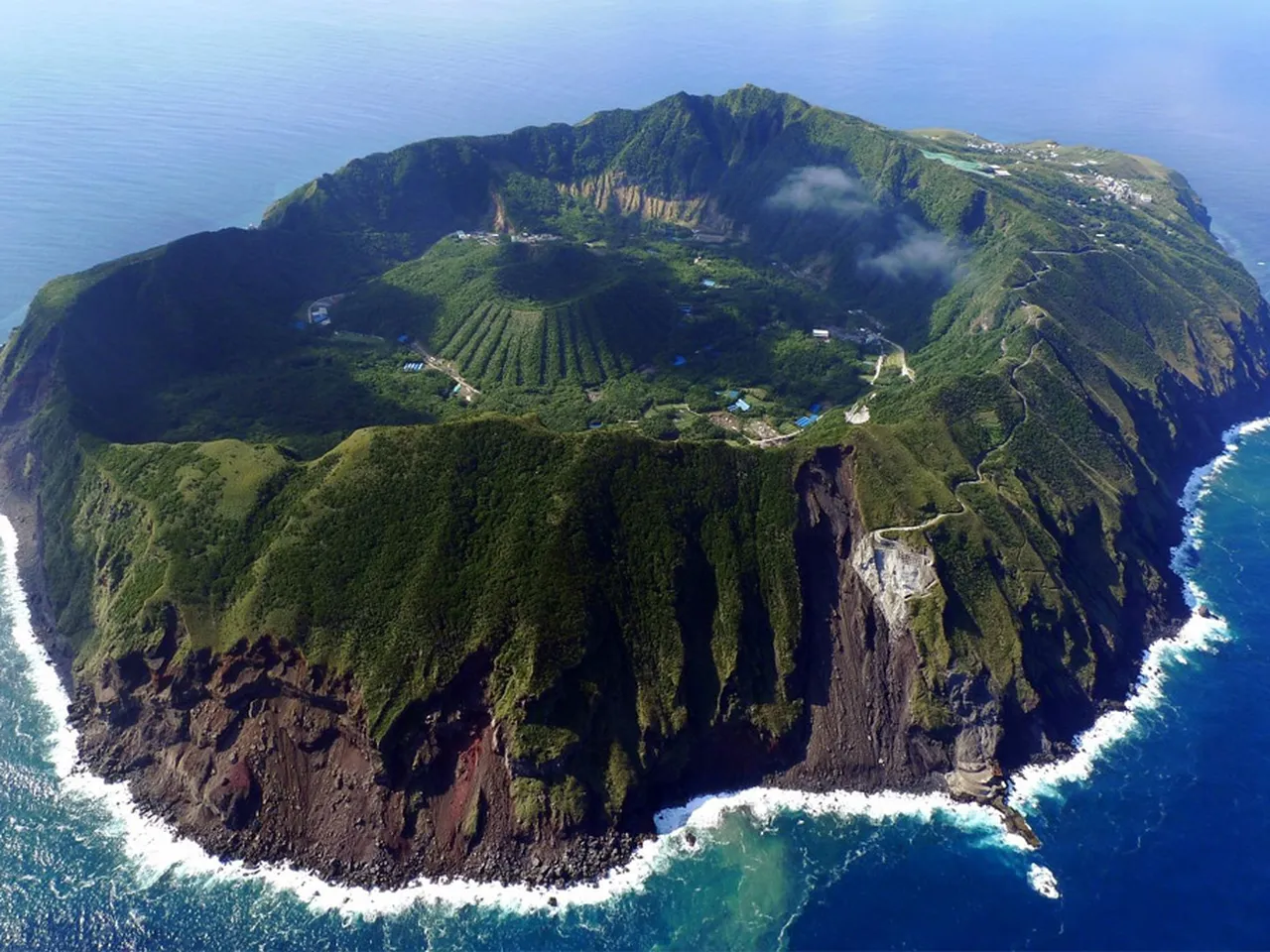
Aogashima: Japan’s Volcanic Enclave – A Journey to the Edge of the World
Nestled in the vast Philippine Sea, Aogashima is a volcanic island that belongs to Japan but feels like a world unto itself. This remote speck of land, the southernmost and most isolated inhabited island of the Izu archipelago, spans just 5.9 square kilometers and rises dramatically from the ocean floor. Its geography is nothing short of breathtaking: Aogashima is a volcano within a volcano, with the entire island forming the outer rim of a massive caldera, and a smaller, active secondary cone—Maruyama—nestled inside. This double-crater configuration creates a surreal landscape where a small village clings to the inner walls of the ancient caldera, surrounded by sheer cliffs and the endless Pacific. With a population hovering around 170, Aogashima embodies self-sufficiency, relying on fishing, limited agriculture, and communal spirit. There are no traffic lights, no convenience stores—just raw, elemental nature, including natural saunas powered by geothermal steam rising from the earth. Reaching this hidden jewel requires a ferry or helicopter from Hachijōjima, a multi-hour voyage that underscores its profound isolation. Aogashima is not merely an island; it is a testament to life’s tenacious resilience, a living relic of geological fury, and one of Japan’s most enigmatic destinations for those seeking solitude and a visceral connection to the planet’s primal forces.
Geological Origins: A Volcano’s Eternal Embrace
Aogashima’s story begins millions of years ago in the Philippine Sea, part of the Pacific Ring of Fire where tectonic plates collide with relentless energy. Formed around 170,000 years ago during the Pleistocene epoch, the island emerged from underwater eruptions as part of the Izu-Bonin-Mariana Arc, a chain of volcanic islands stretching 2,400 kilometers from Japan to Guam. The outer caldera, measuring 3 kilometers in diameter and 400 meters deep, resulted from a cataclysmic eruption approximately 100,000 years ago, collapsing the volcano’s summit into a cauldron that filled with seawater and debris. Within this basin, the inner cone Maruyama rose 423 meters above sea level, its last major eruption in 1783 claiming 30 lives and forcing temporary evacuations.
Today, Maruyama remains active, with fumaroles venting sulfurous steam and hot springs bubbling at 80–90°C (176–194°F), creating the island’s famous natural saunas. These geothermal features, accessible via trails like the Maruyama Loop (2 km, moderate difficulty), allow visitors to sit on heated rocks in semi-enclosed caves, a practice locals have enjoyed for centuries. The island’s soil, enriched by volcanic ash, supports limited agriculture—sweet potatoes, taro, and millet—but its rugged terrain limits cultivation to terraced plots inside the caldera. Seismologists monitor Aogashima closely through Japan’s Meteorological Agency, with evacuation drills held annually due to its proximity to fault lines.
The caldera’s unique microclimate—milder temperatures (average 15–20°C or 59–68°F) and higher humidity—fosters a biodiversity hotspot, home to rare plants like the Aogashima lily (Lilium alexandrae) and birds such as the Izu thrush. UNESCO recognizes the Izu Islands for their geological significance, and Aogashima’s dual-volcano structure makes it a prime site for volcanology studies, paralleling the dramatic landscapes of Hawaii’s Kilauea or Iceland’s Eyjafjallajökull.
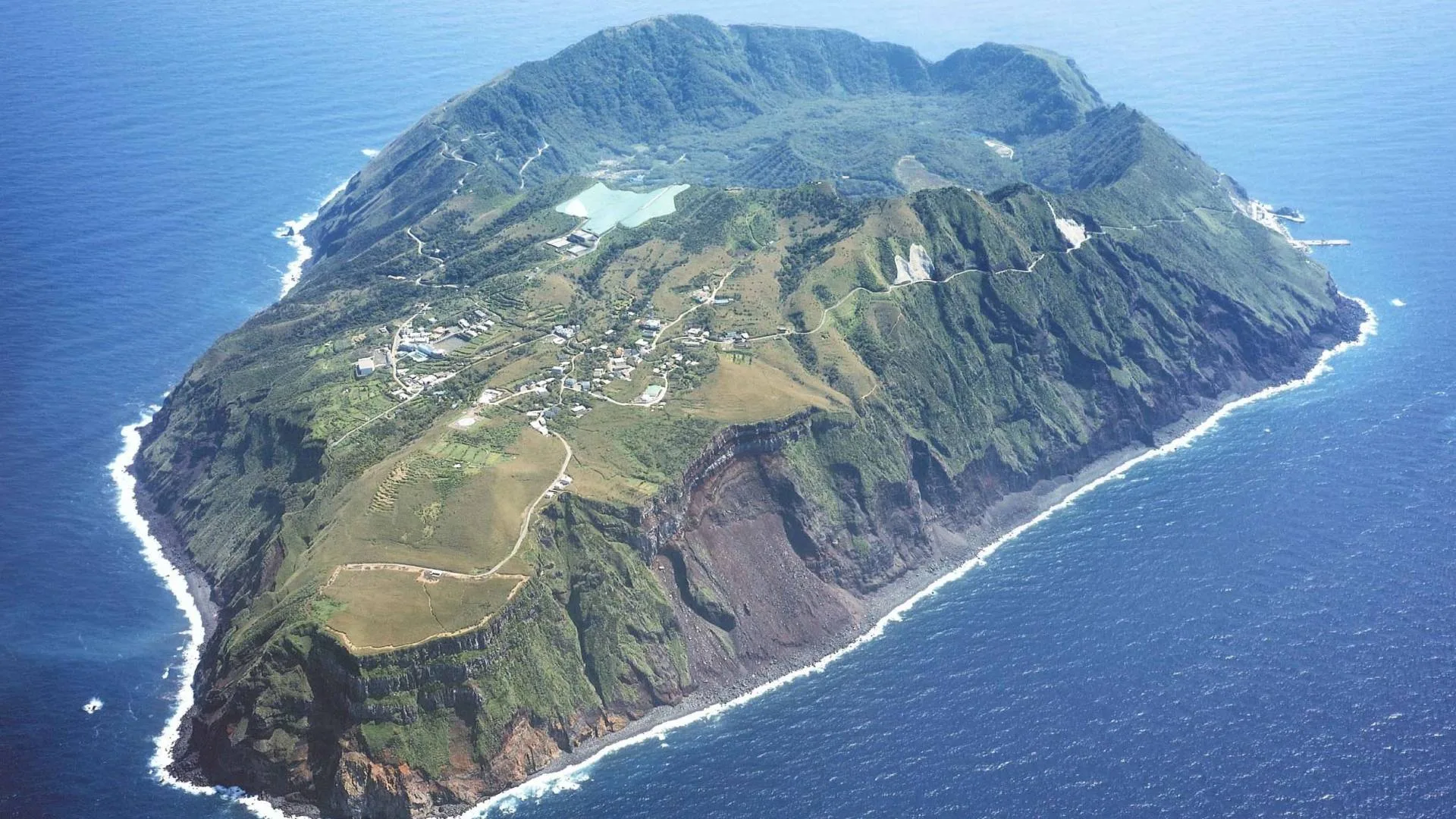
A Community Forged by Isolation
With a population of approximately 170 (down from 500 in the 1970s due to emigration), Aogashima’s residents are descendants of early settlers who arrived in the 18th century, drawn by the island’s fertile volcanic soil. The community, known as the Aogashima-mura, is tightly knit, governed by a village assembly that handles everything from fishing quotas to emergency preparedness. Fishing dominates the economy—tuna, mackerel, and squid are hauled using traditional nets from small boats, with catches sold on Hachijōjima or Tokyo markets. Small-scale farming yields rice, vegetables, and the island’s famous sweet potatoes, while communal livestock like goats roam the caldera walls.
Education is a priority: the single elementary school serves 10–15 children, with older students ferried to Hachijōjima for high school. Healthcare is basic—a small clinic with a nurse, supported by monthly doctor visits—reflecting the challenges of isolation. Power comes from solar panels and diesel generators, with water sourced from rainwater collection and a desalination plant. The village hall doubles as a community center for festivals like the annual Maruyama Fire Ritual, where residents light bonfires to honor the volcano’s spirits, blending Shinto traditions with local folklore.
Daily life revolves around the sea and soil, with women often managing gardens while men fish. The island’s youth, facing limited opportunities, prompt government incentives like subsidies to stay, but depopulation remains a threat. Aogashima’s self-sufficiency fosters a strong communal bond, where neighbors share resources and support during typhoons or eruptions, echoing the resilience of remote communities like the Haenyeo divers of Jeju Island.
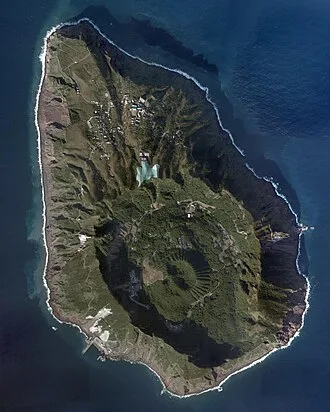
Reaching Aogashima: A Voyage of Solitude
Accessing Aogashima is an adventure that tests one’s patience and appreciation for remoteness. The primary route starts from Tokyo’s Haneda Airport, with a 1-hour flight to Hachijōjima (daily via Japan Air Commuter). From there, options diverge:
- Ferry: The Aogashima Maru, a 2.5-hour vessel departing twice weekly, costs ¥3,000 (~$20 USD) one-way but is weather-dependent, often canceled during rough seas.
- Helicopter: A 15-minute charter from Hachijōjima Airport (~¥20,000 or $130 USD) offers stunning aerial views but requires advance booking.
No direct flights or ferries from Tokyo exist, ensuring the journey remains arduous. Once ashore, there’s no airport or harbor—just a small jetty for supply boats. Visitors must arrange homestays with locals (¥5,000/night, ~$33 USD) or camp in designated areas, with no hotels or ATMs. Cell service is spotty, and Wi-Fi nonexistent, amplifying the sense of disconnection.
The best time to visit is summer (June–August) for milder weather and the annual Aogashima Festival, featuring traditional dances and volcanic feasts. Winter brings isolation but clearer stargazing, with the island’s light pollution-free skies rivaling those of Hawaii’s Mauna Kea.

Cultural and Geological Significance
Aogashima’s dual-volcano structure is a geological rarity, studied by the Geological Survey of Japan for insights into caldera formation. The inner cone’s activity, including 1783’s eruption that killed 30 residents, has shaped local folklore—tales of the volcano as a sleeping dragon, appeased with offerings. Shinto shrines dot the island, where villagers perform rituals to Maruyama, blending animism with Buddhism.
The island’s isolation has preserved unique customs, like the Aogashima dialect (a variant of Tokyo Japanese) and traditional fishing songs. As part of the Izu-Shichito National Park, it attracts eco-tourists for birdwatching (over 100 species, including the Izu petrel) and hiking the 5 km caldera rim trail, offering views of the Philippine Sea.

Challenges and Preservation Efforts
Depopulation threatens Aogashima, with youth leaving for mainland jobs. Japan’s Ministry of Internal Affairs offers relocation incentives, but the island’s harsh winters and limited services deter many. Volcanic risks remain: a 2018 minor eruption prompted evacuations, and monitoring stations track seismic activity.
Preservation is key—the Tokyo Metropolitan Government funds infrastructure, while NGOs like the Izu Conservation Society promote sustainable tourism. In 2023, a ¥500 million (~$3.3 million USD) grant upgraded the jetty and installed solar power, aiming to boost visitors to 1,000 annually without overwhelming the ecosystem.

Lessons for Today
Aogashima offers timeless insights:
- Resilience in Isolation: Like the Haenyeo, its community thrives through self-reliance.
- Human-Nature Harmony: Its volcanic beauty, akin to the white auroras, inspires sustainable living.
- Cultural Preservation: Folklore and dialect, similar to the Moors’ legacy, demand protection.
A World Within a World
Aogashima, Japan’s most isolated inhabited island, cradles life in a volcano’s embrace, its 170 souls a testament to endurance. From Maruyama’s steam vents to the Philippine Sea’s horizon, it beckons the brave with solitude and wonder. A hidden jewel, it whispers: in remoteness lies renewal. 🌋



